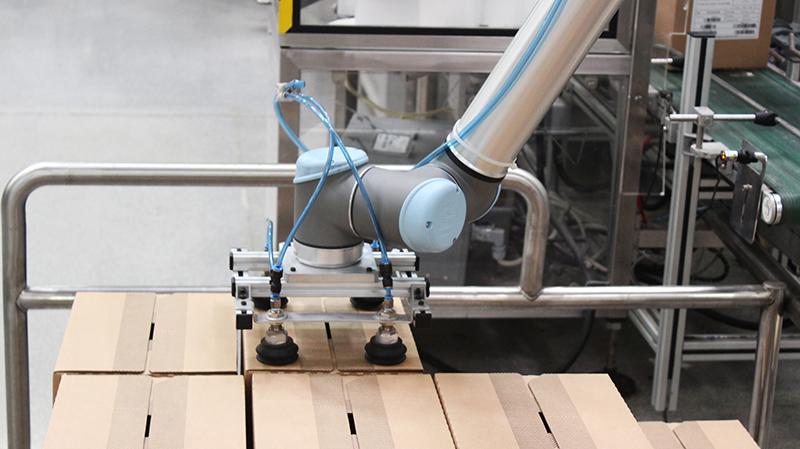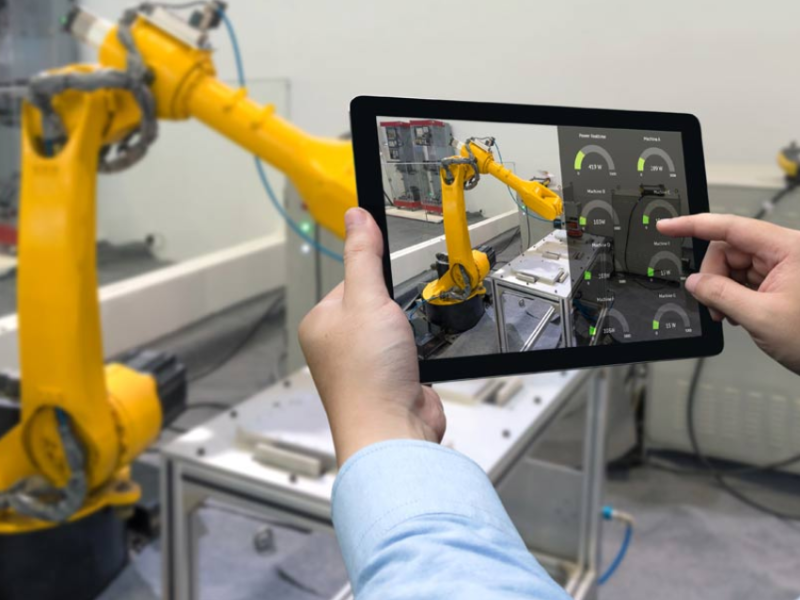One of the most popular materials handling applications, palletising, takes place at vast majority of manufacturers across the globe and requires that many final products be moved onto a palette as quickly and efficiently as possible.
The demand to automate palletising tasks has increased exponentially over the years, and today, palletising is one of the most popular tasks undertaken by collaborative robots (cobots) around the world. Best-known for working safely alongside humans, cobots have relieved many factory workers from workplace injuries commonly associated with palletising.
A recent study released by Universal Robots explains that overexertion and repetitive movements account for 24% and 8% of workplace injuries in the US alone. Regional Director for Asia Pacific, James McKew adds that manual palletising is not only dangerous, but costly too. “Collaborative automation is paving the way to a fulfilled and productive workforce. However, there are still millions of tasks that can be automated and it’s up to us to change the way in which work is done”.
“It is time for people to work with robots, not like robots.”
Speaking to the ergonomic pressure on workers, McKew says that manual labour focused on dull, dirty and even dangerous jobs comes at a price. “Not only is an employee at risk, but it also compromises on the business’s throughput and quality.”
Hello Painless Palletising
The demand on manufacturers to ‘deliver the goods’ has exposed several drawbacks in traditional palletising methods. “It lacks the flexibility required for modern production and stifles the workforce. People should be focused on value-added tasks and working with robots. The way in which people view jobs has changed and we should be focused on creating jobs focused on creativity and problem solving”.
Speaking to the traditional method of robot deployment, McKew says: “Traditional palletising robot deployments requires extensive safety guarding to protect humans from harm, which adds to cost and footprint. Cobots add a high level of flexibility, safety, ease of use and an attractive total installed cost.”
In a recent case study, Universal Robots’ UR10 cobot was able to palletise 1100 boxes in an 8-hour shift at Unilever. “This would be impossible and extremely taxing on the human body.”
Am I Ready to Automate?
The arguments for using UR cobots in collaborative palletising applications are compelling, but what additional considerations should be kept in mind when thinking about deploying a collaborative palletising cell?
McKew says that there are ten key questions one needs to consider, ask yourself:
-
What type of palletising configuration is best suited to different applications?
-
Should I use a fixed pedestal or vertical 7th axis setup?
-
What are the basics of payload?
-
What sort of gripper will I need?
-
Does UR+ provide complete palletising solutions?
-
What size should the overall footprint of my palletising cell be?
-
What are the safety considerations?
-
Is easy-to-use specialist cobot palletising software available?
-
Is there software I can use to easily define stack patterns?
-
Where can I find real-world case studies?
UR10e to the Rescue
If you have answered these questions and feel that you are ready to start automating, then the UR10e cobot is for you.
Answering to the high demand for palletising applications and the flexibility required by various customers, Universal Robots recently unveiled its UR10e with a 12.5kg payload. “The advancements to the UR10 series allows us to offer customers enhanced flexibility such as a greater payload, more applications and the handling of heavier items. Furthermore, the price remains unchanged” he concludes.







